This is an advance, uncorrected proof. Not for resale, duplication, or reposting. Please do not quote without comparison to the finished book.
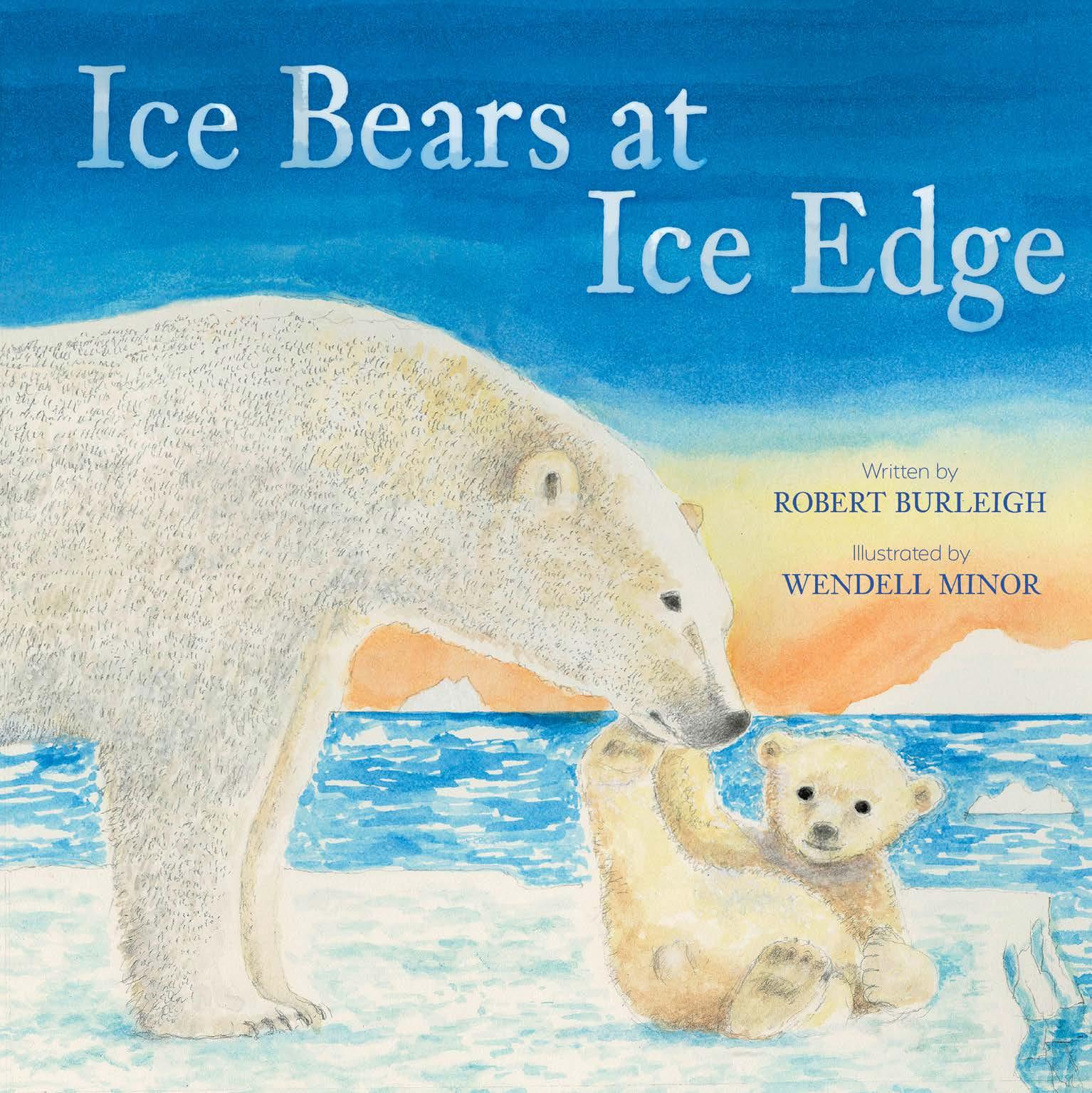
This is an advance, uncorrected proof. Not for resale, duplication, or reposting. Please do not quote without comparison to the finished book.
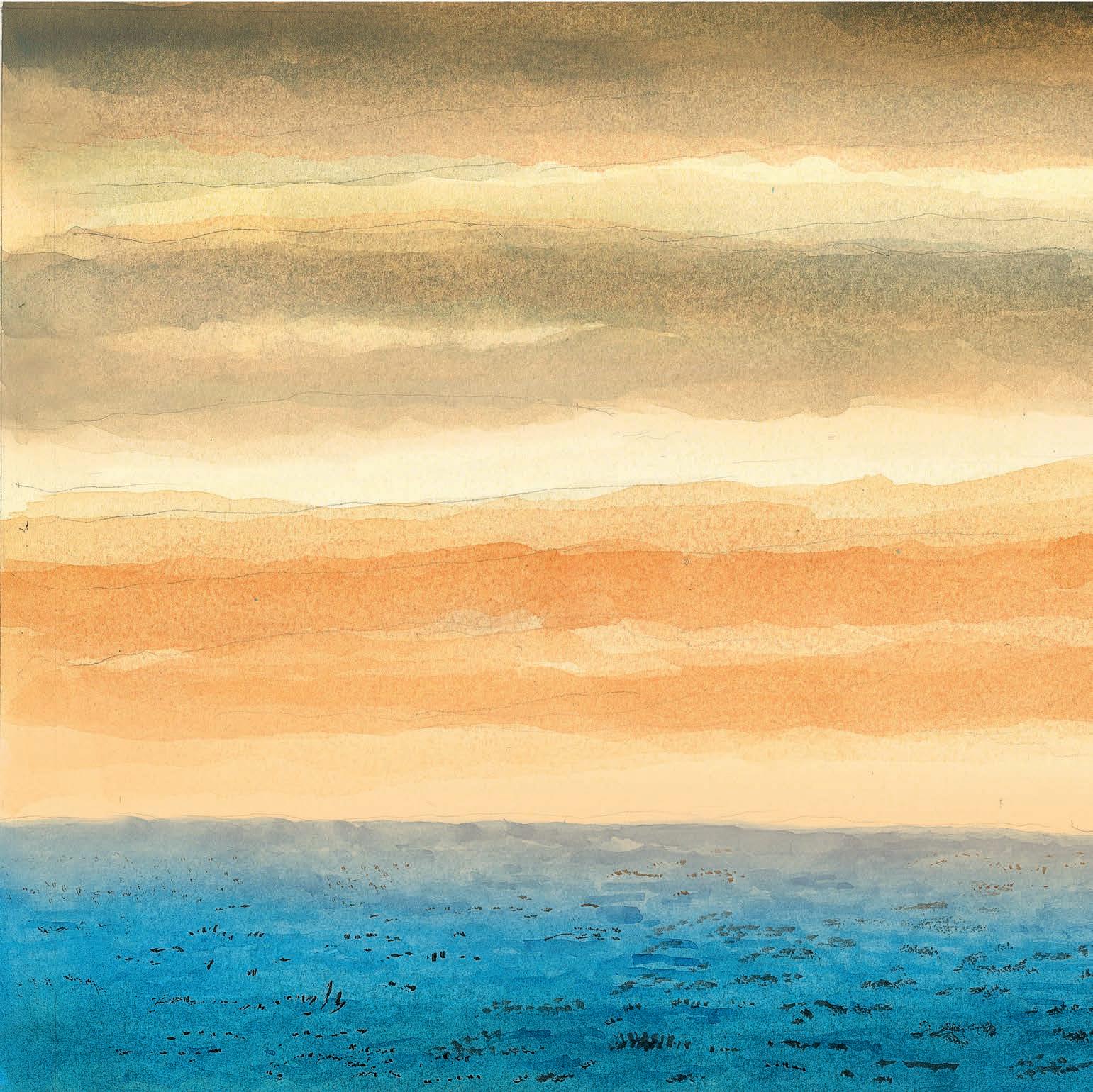
This is an advance, uncorrected proof. Not for resale, duplication, or reposting. Please do not quote without comparison to the finished book.
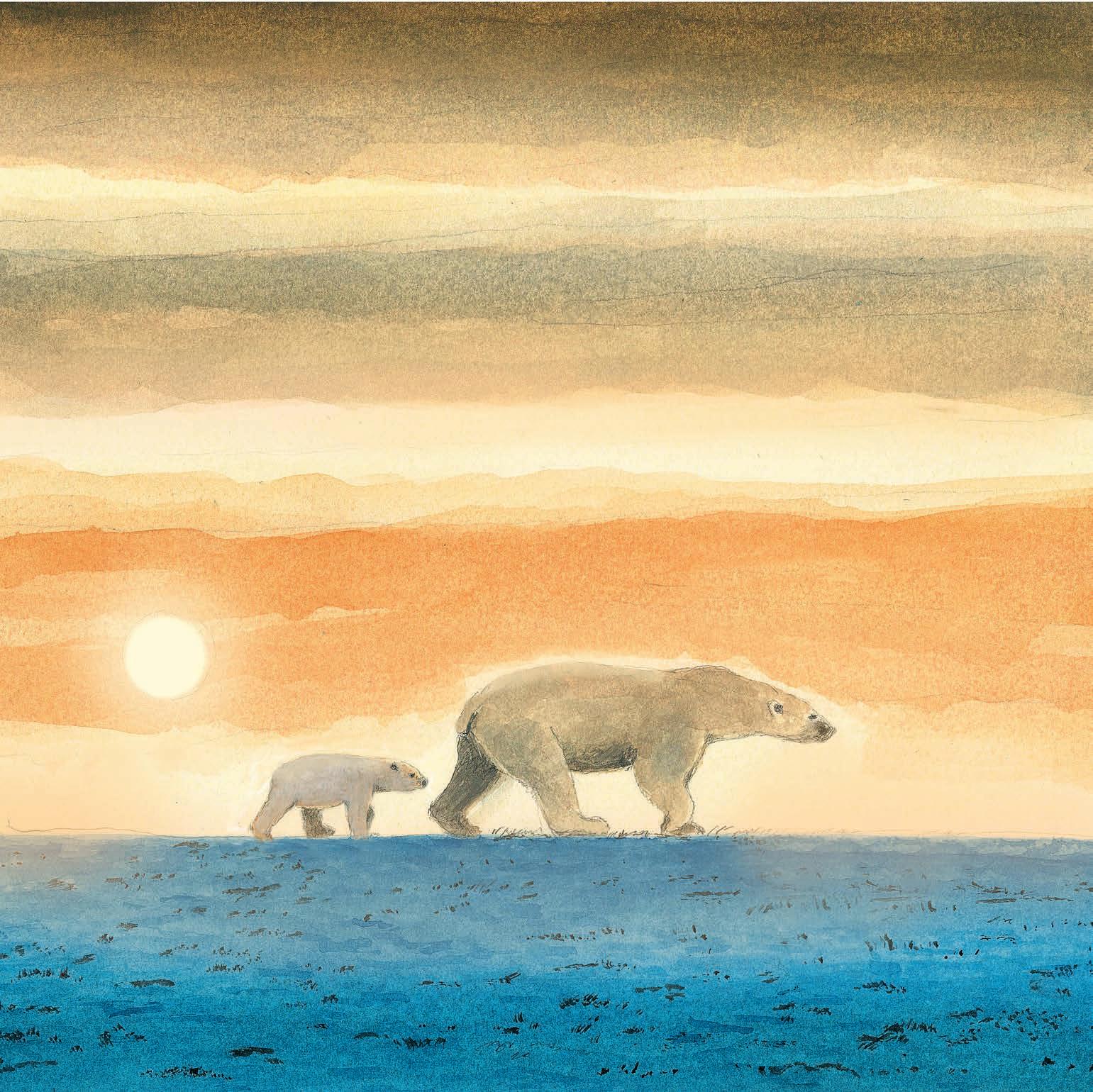
This is an advance, uncorrected proof. Not for resale, duplication, or reposting. Please do not quote without comparison to the finished book.

Ice Bears at Ice Edge

This is an advance, uncorrected proof. Not for resale, duplication, or reposting. Please do not quote without comparison to the finished book.
Written by ROBERT BURLEIGH
MINOR
Abrams Books for Young Readers New York
Illustrated by
WENDELL
This is an advance, uncorrected proof. Not for resale, duplication, or reposting. Please do not quote without comparison to the finished book.

It is March in the cold North. The long-gone sun is rising. Silvery ice glitters. Snow sparkles in the hazy glow. Two polar bears stand at ice edge: mother and cub.
This is an advance, uncorrected proof. Not for resale, duplication, or reposting. Please do not quote without comparison to the finished book.

The land of the ice bears stretches far in all directions. White snow. White ice. White bears. Beyond the pale shore, open water flows darkly toward the sea.
This is an advance, uncorrected proof. Not for resale, duplication, or reposting. Please do not quote without comparison to the finished book.
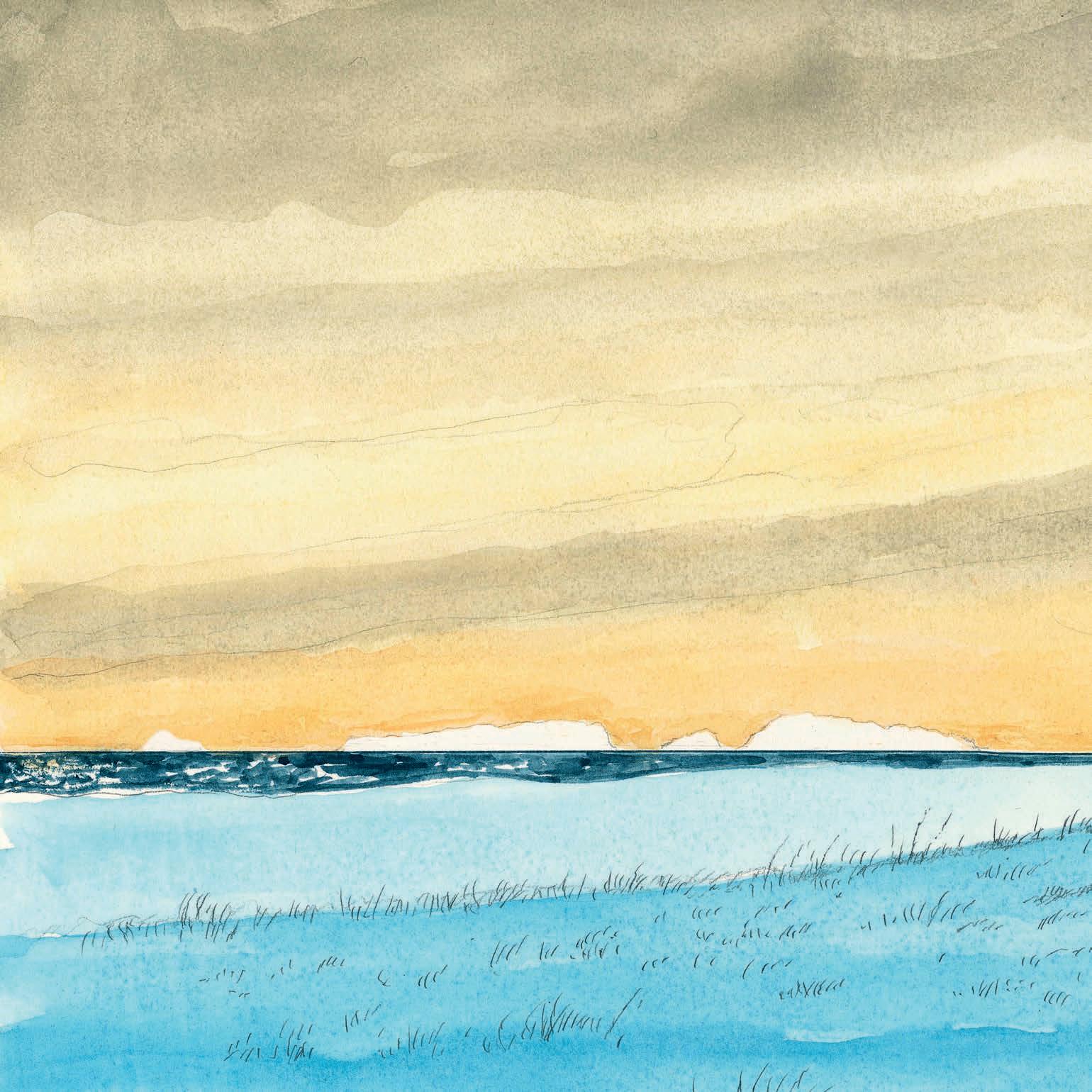
This is an advance, uncorrected proof. Not for resale, duplication, or reposting. Please do not quote without comparison to the finished book.

The mother polar bear’s keen eyes search the water. She sniffs the air once. Twice. She and her cub are hungry. She must hunt.
This is an advance, uncorrected proof. Not for resale, duplication, or reposting. Please do not quote without comparison to the finished book.

She flattens down on the ice edge, nose forward, poised to pounce on a seal who might swim up to the surface. She waits. She watches.
This is an advance, uncorrected proof. Not for resale, duplication, or reposting. Please do not quote without comparison to the finished book.

Small waves lick the ice as her cub frolics nearby. He rolls and tumbles, pawing at the light and feathery snow. Then—
This is an advance, uncorrected proof. Not for resale, duplication, or reposting. Please do not quote without comparison to the finished book.

This is an advance, uncorrected proof. Not for resale, duplication, or reposting. Please do not quote without comparison to the finished book.

BOOM!
Suddenly, the ice they stand on shatters and breaks off!
This is an advance, uncorrected proof. Not for resale, duplication, or reposting. Please do not quote without comparison to the finished book.
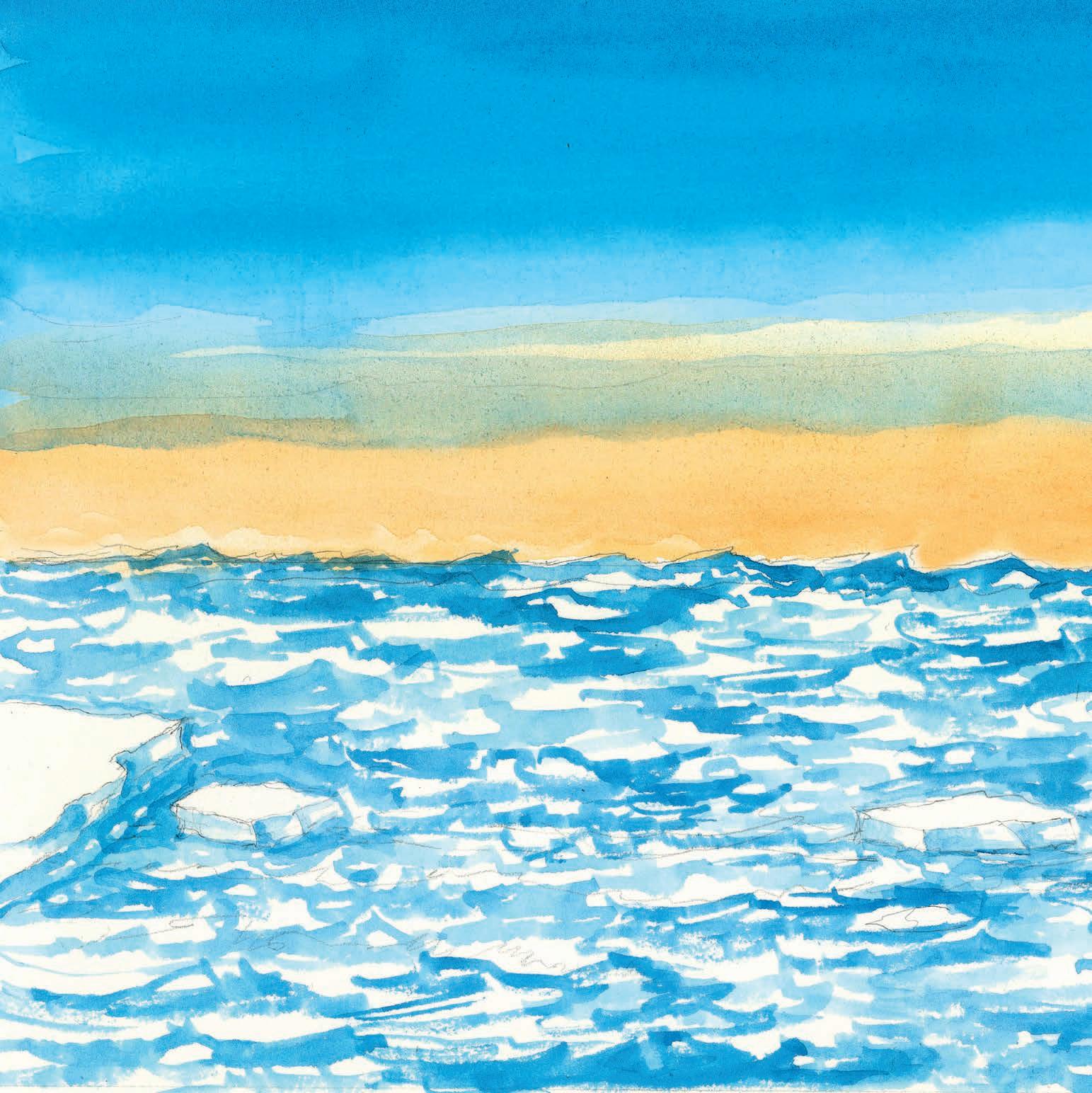
CRACK!
The mother bear and her cub sway as the ice beneath them separates from land. They begin to float out on the sheet of broken ice.
This is an advance, uncorrected proof. Not for resale, duplication, or reposting. Please do not quote without comparison to the finished book.
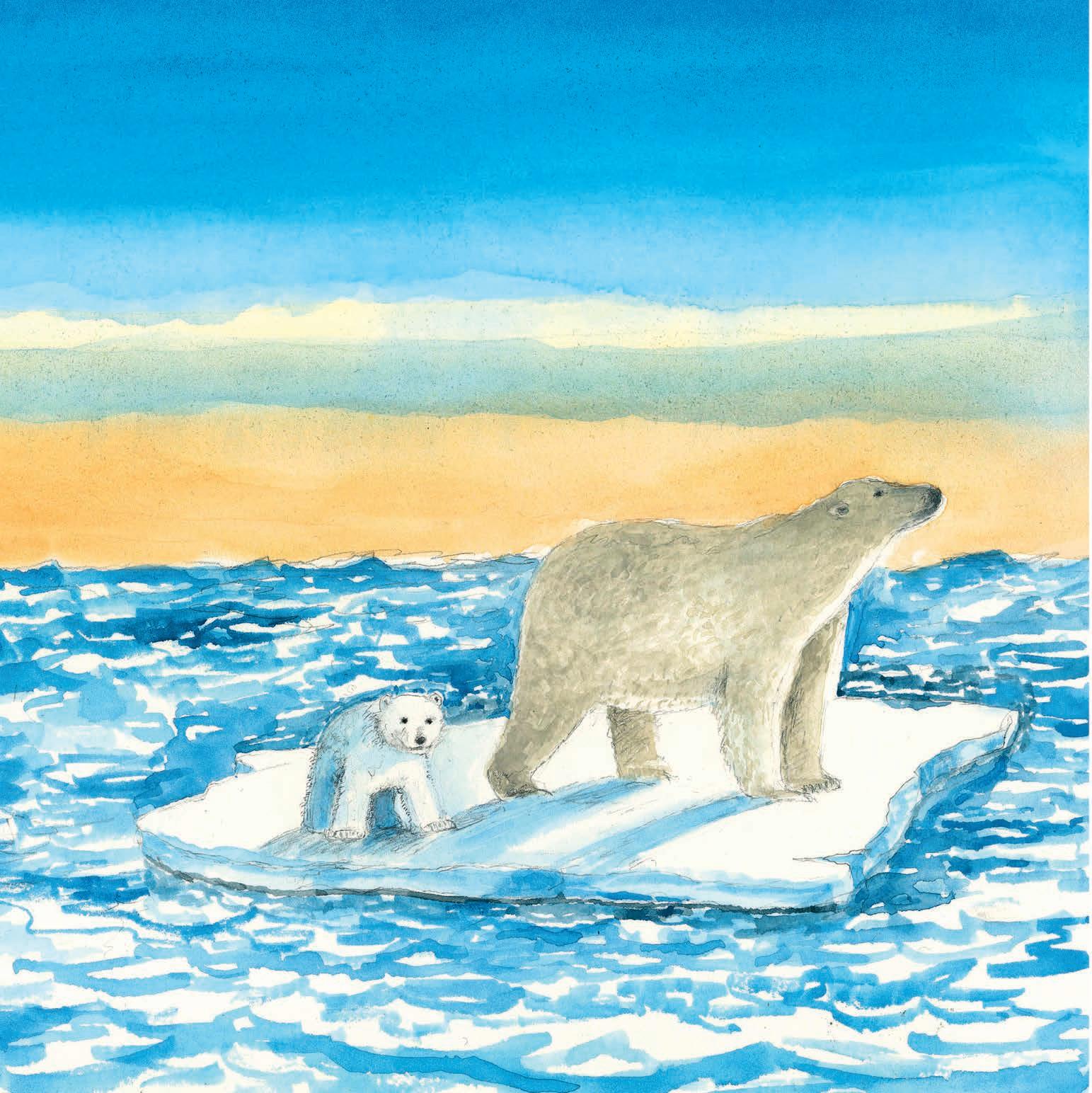
CUT ADRIFT!

Huddling close to his mother, the cub trembles and whines. The floe wobbles side to side in the strong wind.
Whitecaps dance wildly as the ice sheet rocks.
The mother bear tilts to keep them from overturning in the rough water. But they drift out so quickly!
Farther. Farther.
This is an advance, uncorrected proof. Not for resale, duplication, or reposting. Please do not quote without comparison to the finished book.
The small ice floe could crack apart at any moment. The mother bear stares toward shore—how can they get back?
Her cub’s claws scratch and slide on the slippery ice.
This is an advance, uncorrected proof. Not for resale, duplication, or reposting. Please do not quote without comparison to the finished book.

This is an advance, uncorrected proof. Not for resale, duplication, or reposting. Please do not quote without comparison to the finished book.
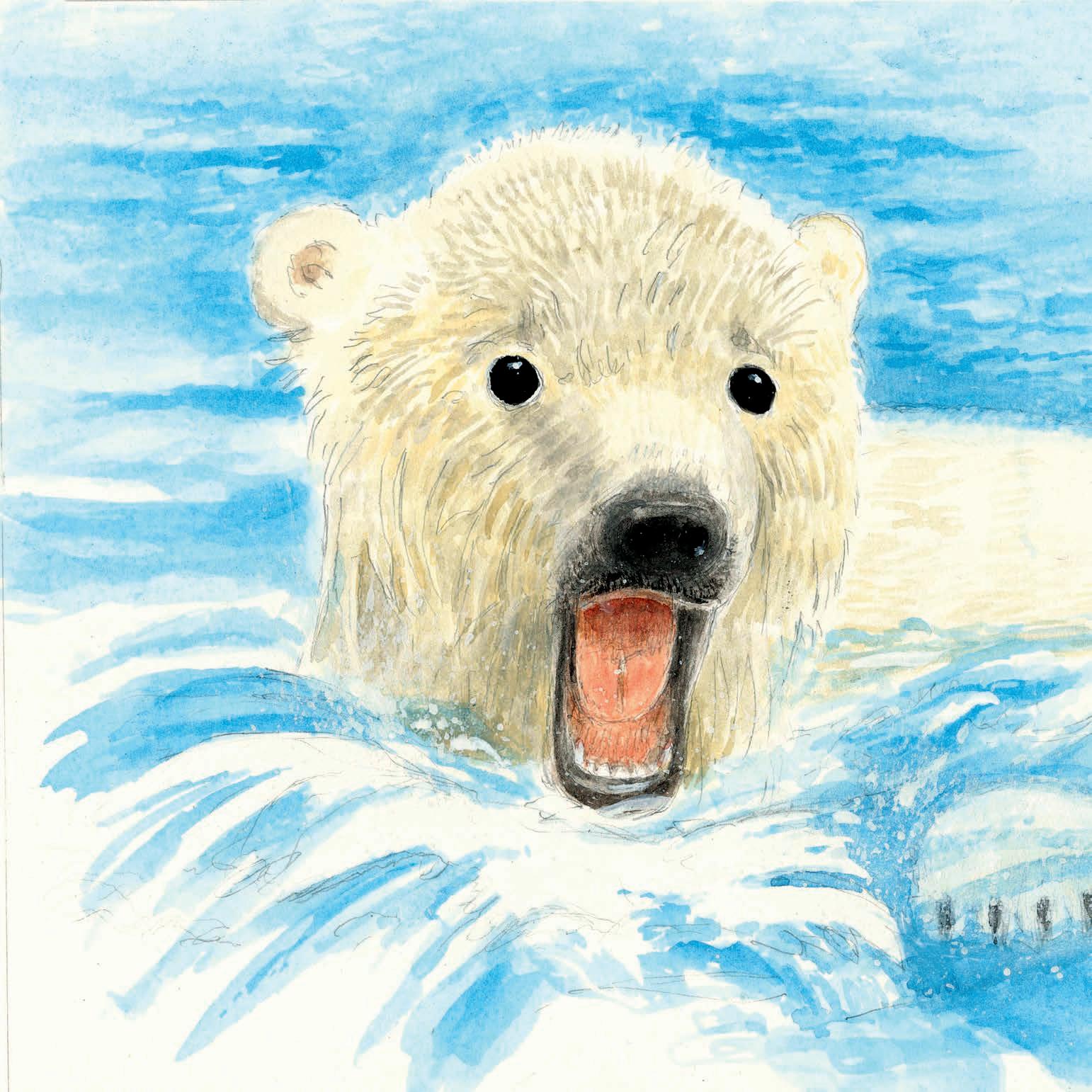
SPLASH!
Her cub slips—then, as she watches, helpless, he skids off into the freezing water with a sharp, terrified squeal.

With all his strength, the cub slaps the water wildly, sucking for air with sharp gasps. He bobs and begins to sink, his head barely staying above the surface.
This is an advance, uncorrected proof. Not for resale, duplication, or reposting. Please do not quote without comparison to the finished book.
This is an advance, uncorrected proof. Not for resale, duplication, or reposting. Please do not quote without comparison to the finished book.

His mother stretches out one huge paw to pull him back. Too late! The waves are choppy. Her cub is out of her reach!
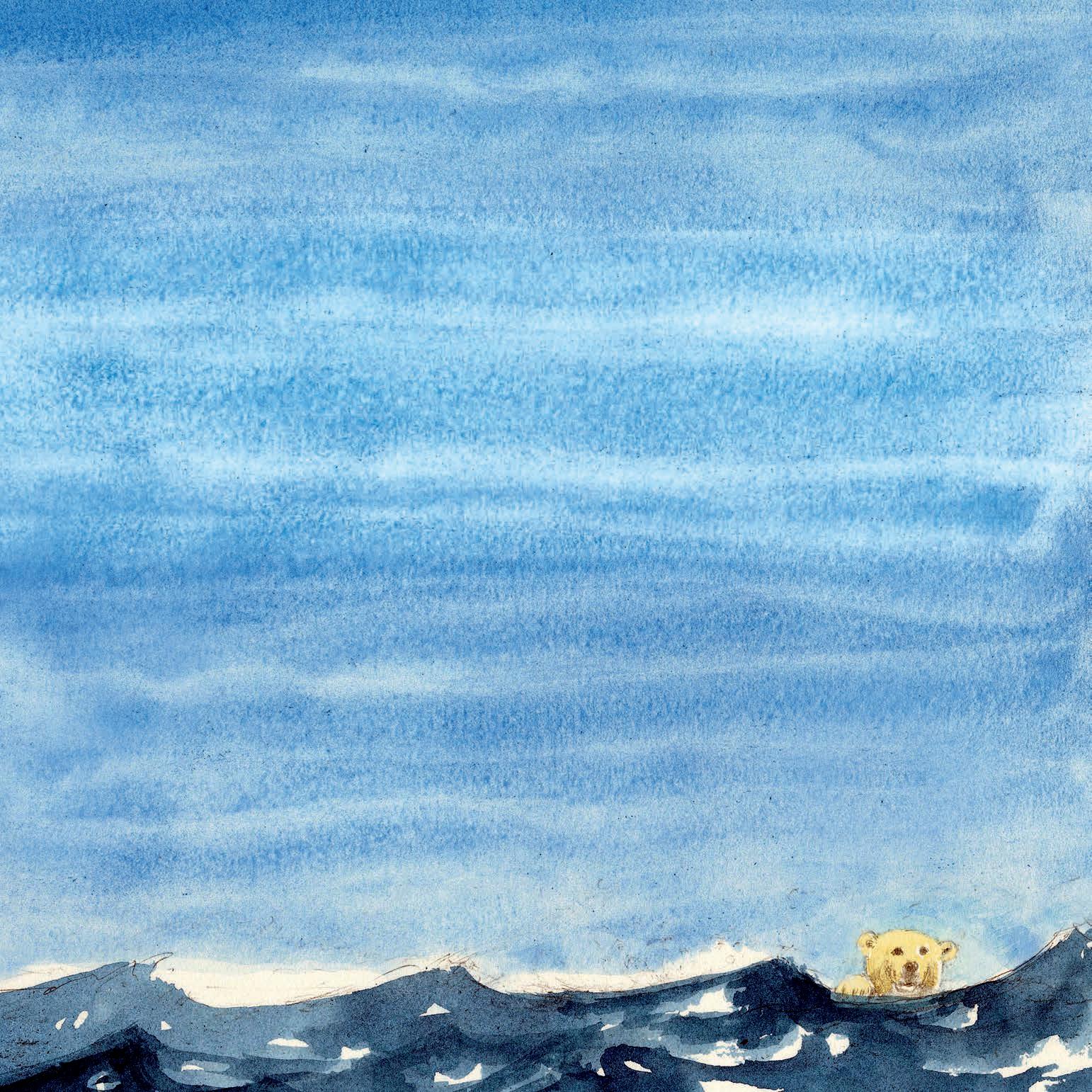
IN SHE DIVES!
This is an advance, uncorrected proof. Not for resale, duplication, or reposting. Please do not quote without comparison to the finished book.
This is an advance, uncorrected proof. Not for resale, duplication, or reposting. Please do not quote without comparison to the finished book.
The mother polar bear raises her head out of the water, looking. The sea is carrying her small cub away. So quickly. If she doesn’t reach him soon, it will be too late.
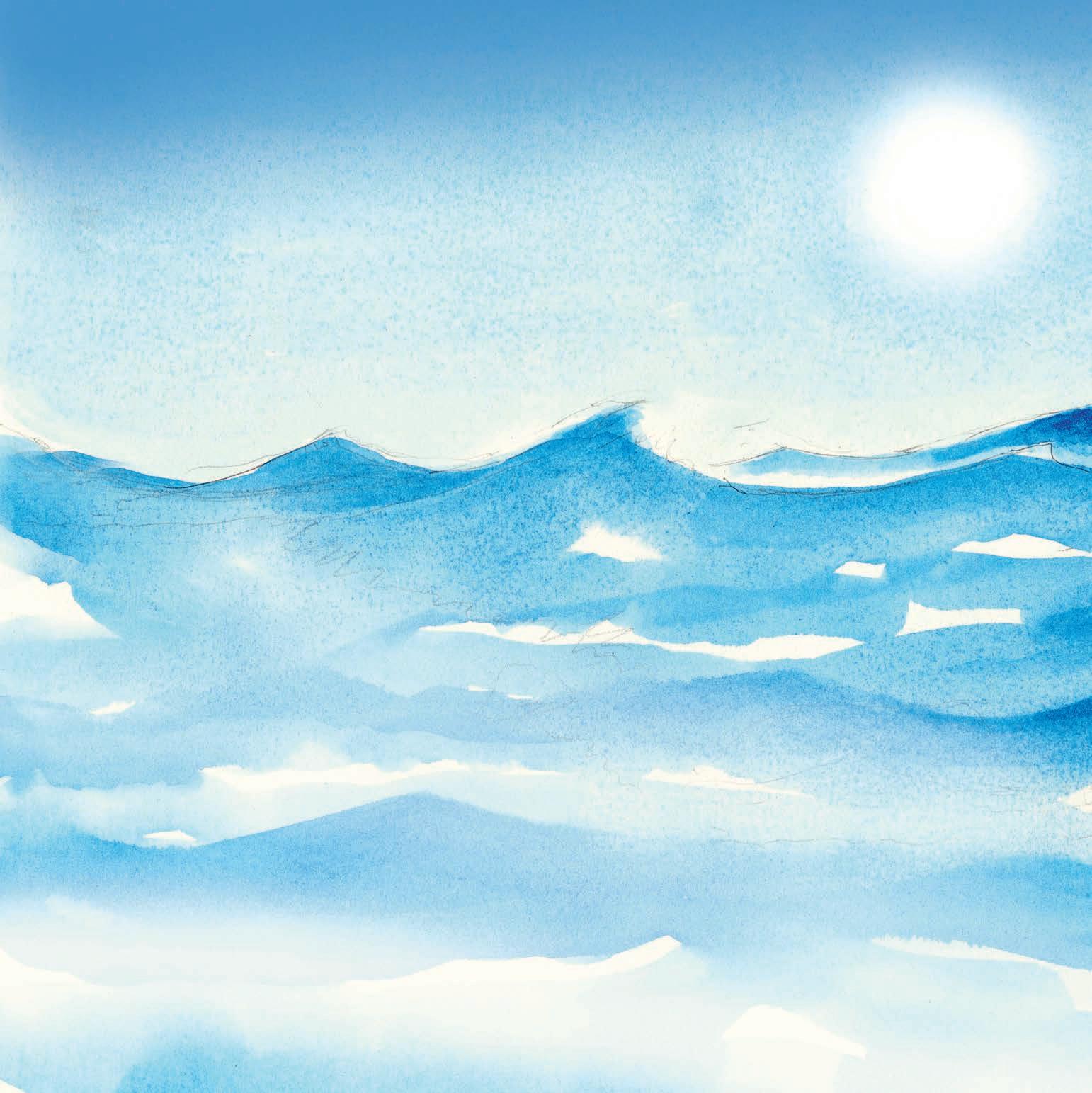
This is an advance, uncorrected proof. Not for resale, duplication, or reposting. Please do not quote without comparison to the finished book.

She pounds through the waves toward her thrashing cub. Reaching him at last, she turns, leading him toward land. Her cub tries to follow. But as he paddles, he becomes weaker. And weaker.
The distant shore shimmers in the pale morning. So far! Can they get there?
Gently, mother polar bear nudges her tired cub forward. Like the fading moon far up in the sky, his strength is waning.
This is an advance, uncorrected proof. Not for resale, duplication, or reposting. Please do not quote without comparison to the finished book.

This is an advance, uncorrected proof. Not for resale, duplication, or reposting. Please do not quote without comparison to the finished book.

The cub whimpers softly, and the mother hears. She shakes her massive head once and dives. Then, rising beneath her cub, she lifts him. Up, up, up—onto her back!
This is an advance, uncorrected proof. Not for resale, duplication, or reposting. Please do not quote without comparison to the finished book.

The exhausted cub clutches at his mother, his claws digging into her fur. He must hold on for his life! She carries him as her powerful legs pull them slowly through the roiling water.
This is an advance, uncorrected proof. Not for resale, duplication, or reposting. Please do not quote without comparison to the finished book.

The cub’s grip loosens. His head flops.
Can he hold on?
Can the mother bring her cub safely to shore? Closer. Closer. Almost—

At last! With one final heave, the mother bear drags her cub onto the shore’s icy edge. For a moment, they lie side by side, panting.
This is an advance, uncorrected proof. Not for resale, duplication, or reposting. Please do not quote without comparison to the finished book.
This is an advance, uncorrected proof. Not for resale, duplication, or reposting. Please do not quote without comparison to the finished book.

The cub nestles against his weary mother’s body, nuzzling for milk. In the dim sunlight, they rest.
The polar bear cub has learned an important lesson: The ice cannot be trusted.
This is an advance, uncorrected proof. Not for resale, duplication, or reposting. Please do not quote without comparison to the finished book.

This is an advance, uncorrected proof. Not for resale, duplication, or reposting. Please do not quote without comparison to the finished book.

Rising, the cub shakes the salty water off his fur. Sparkling droplets spin into the air. Leaping up, he plays in the snow once more.
This is an advance, uncorrected proof. Not for resale, duplication, or reposting. Please do not quote without comparison to the finished book.
Soon, the mother will hunt again for their food. For now, they go back toward their den. They must gather strength.
Slowly, silently, the ice bears vanish into the endless whiteness of the snow.
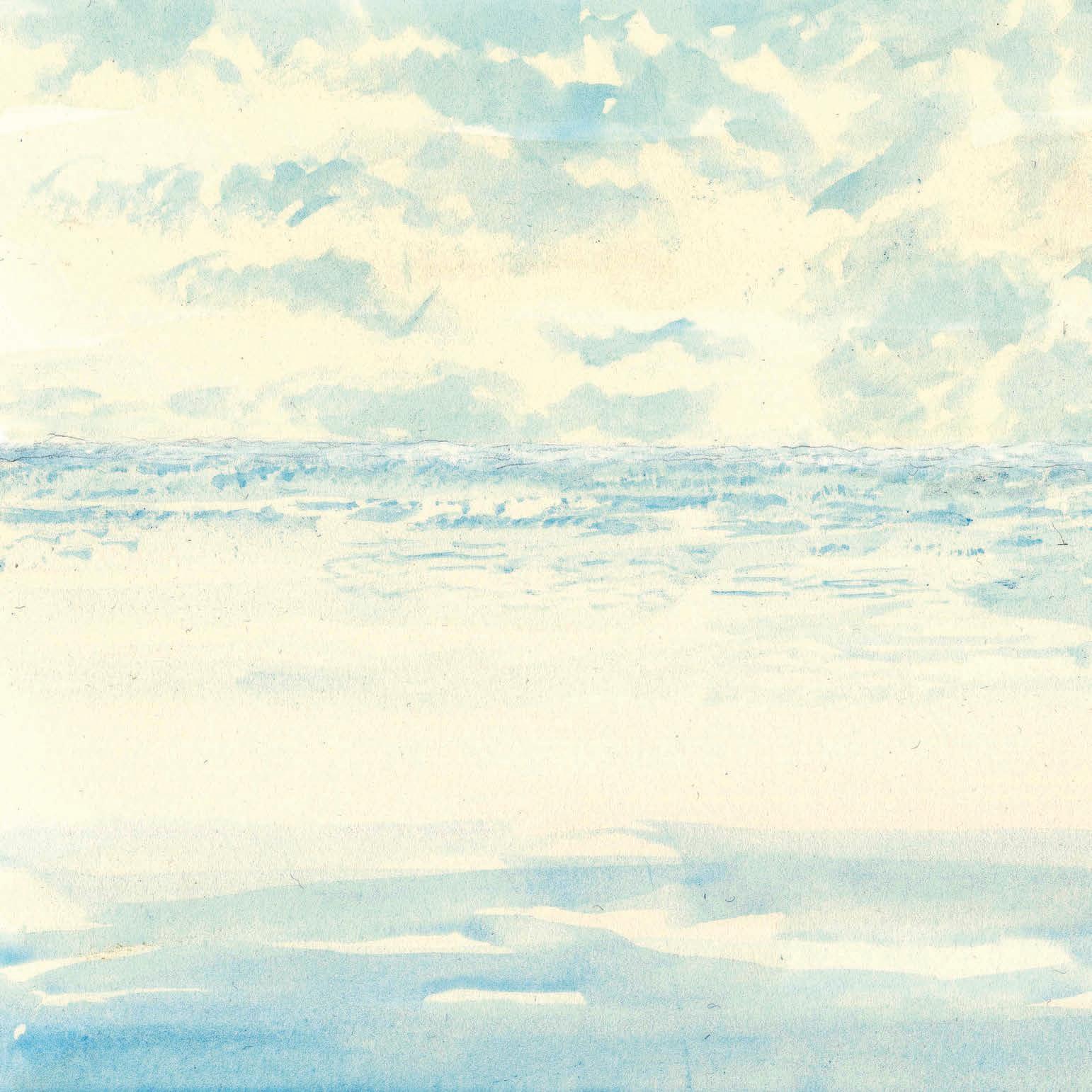
This is an advance, uncorrected proof. Not for resale, duplication, or reposting. Please do not quote without comparison to the finished book.

POLAR BEAR FACTS
WHO ARE POLAR BEARS?
They are called by different names: polar bears, ice bears, snow bears—and even sea bears. But the truth is, each one of these names fits them well. They are “polar bears” because their world is in the polar region called the Arctic—far-far north, near the North Pole itself. They are “ice” bears or “snow” bears because the world they inhabit is a world of ice and snow. And they are “sea” bears, too, because they are powerful swimmers, often hunting or moving about in the cold Arctic Sea.
HOW BIG ARE POLAR BEAR CUBS?
Although huge when full-grown, a baby polar bear, called a cub, is tiny and weighs only a few pounds. A mother bear typically gives birth to one or two cubs at a time. The babies are weak and helpless—completely dependent on their mother for food, safety, and shelter. Think of a newborn bear as being the size of a small doll. This, of course, will change, but only slowly. At two or three years old, when the young bears are ready to leave their mother’s den, they will be nearing a size of several hundred pounds! But getting to that age is filled with hard work and danger—and sometimes luck. In two years’ time, polar bear cubs must gain size and strength and begin to learn to hunt, swim, and more. And unfortunately, many baby bears don’t survive to adulthood.
HOW DO POLAR BEARS HUNT?
Polar bears’ main source of food is seals. Since underwater seals— themselves hunting fish—must at times come up for air, the bear waits carefully at the ice edge. When a seal emerges, the bear strikes quickly. But a polar bear’s hunt is successful only around two percent of the time. This means they must be hunting almost constantly to survive!
WHAT ARE SOME OTHER INTERESTING THINGS TO KNOW ABOUT POLAR BEARS?

• Polar bears are the largest known bears and the largest predators on land.
• Male bears can weigh more than 1,000 pounds when full grown, while adult females weigh between 500 and 1,000 pounds.
• Their typical life span is 15 to 18 years, but they can live to be as old as 30.
This is an advance, uncorrected proof. Not for resale, duplication, or reposting. Please do not quote without comparison to the finished book.
• The skin of polar bears is black. They appear white because their fur, which has no color, reflects the visible light.
• Polar bears have up to four inches of fat under their skin to keep them warm in frigid weather.
HOW DO POLAR BEARS LIVE DURING THEIR FIRST FEW MONTHS?
Where do the baby bears live in this bitter-cold world? Their first months take place in a small, mother-built house made of piled-up snow called a den. Here the younglings begin on their path to adulthood. Newborn bear cubs are kept warm and wellfed by their mother, who, amazingly enough, eats nothing during the first months of her babies’ lives while nursing them in the den. When she emerges from the den in the spring, she hunts for food again—mostly seals, as well as other small mammals—for her and her young.
• They have fur on the bottoms of their feet to protect them against the cold.
• Polar bears have been known to swim for hundreds of miles and can maintain speeds of 6 miles an hour.
• Despite their large size, they can run as fast as 25 miles per hour on land. (In comparison, an adult human can run an average of only 12 miles per hour!)
CLIMATE CHANGE
As human-made pollutants increase their presence in the atmosphere, the world’s climate is changing. Global warming means that the usual temperature in many places is rising, sometimes more quickly even than many scientists had predicted. Among other things, this warming trend is causing the Arctic ice and snow so essential to polar bears’ way of life to melt, making it harder for them to hunt for food. Their main prey—the seal— also needs ice to survive. As ice melts and seals move away, it greatly reduces the bears’ food source. In addition, drilling for oil and gas is increasing in the Arctic region, causing potential oil spills and destruction. All of this threatens the polar bear’s longterm survival in its frozen world.
As the ice shrinks and the snow melts, polar bears stand at the edge of a treacherous and increasingly difficult habitat, with their very way of life endangered.
WHAT CAN YOU DO TO HELP?
• Find out more about polar bears. The more you know about them, the better you’ll understand important issues about their changing habitat and why they’re under threat. These websites are a good place to start:
National Geographic polar bear facts: kids.nationalgeographic.com/animals/mammals/facts/ polar-bear
Oceana polar bear facts: oceana.org/marine-life/polar-bear

• Learn about climate change and what is causing the Arctic ice to melt. ice to melt. What steps can you take at home to do your part to help slow down global warming? Learn more here:
Further education from One Planet One Future: oneplanetonefuture.org/education
American Museum of Natural History, Ask a Scientist: www.amnh.org/explore/ology/earth/ask-a-scientist
-about-our-environment/how-can-kids-help-prevent -global-warming
This is an advance, uncorrected proof. Not for resale, duplication, or reposting. Please do not quote without comparison to the finished book.
AUTHOR’S NOTE
In our conversations about possible books, illustrator Wendell Minor and I were on the same page: Polar bears are amazing and inspiring, and we’d like to do a book about them if we could come up with the right story. The challenge was how to convey their precarious way of life while also showing the beauty of their rapidly changing Arctic world. After researching how polar bears are increasingly threatened by melting ice caused by global warming, I decided that an adventure that dramatizes that danger was the best approach. With the addition of Wendell’s gorgeous illustrations, the book took on a life of its own!
Several books served as valuable resources for me, including Polar Bears by Dorothy Hinshaw Patent (Minneapolis, Minnesota: Carolrhoda Books, 2000); Polar Bears by Mark Newman (New York: Macmillan Publishing Group, 2011); and The World of the Polar Bear by Norbert Rosing (Ontario, Canada: Firefly Books, 2006). In addition, the Ocean Conservancy, the World Wildlife Fund, and Polar Bears International were helpful online sources; see their website pages below.
Ocean Conservancy, Wildlife Fact Sheets: About the Polar Bear oceanconservancy.org/wildlife-factsheet/polar-bear
World Wildlife Fund, Polar Bear Stories worldwildlife.org/stories?species_id=polar-bear
Polar Bears International polarbearsinternational.org
This is an advance, uncorrected proof. Not for resale, duplication, or reposting. Please do not quote without comparison to the finished book.
ARTIST’S NOTE

The polar bear is one of the most recognizable and beloved animals on the planet. It is mysterious and beautiful and captures our imagination in a way that few other animals do.
With climate change, the sea ice is melting faster every year, limiting polar bears’ ability to hunt seals and other prey. I found Robert Burleigh’s story about a mother saving her young cub, not yet a strong swimmer, from drowning after sliding off a small ice floe simultaneously dramatic and moving in depicting the plight that all polar bears face today.
Among the many books I used when researching Ice Bears, two were particularly helpful to me in visualizing polar bears in their natural habitat: PolarBears:ACompleteGuidetoTheirBiologyandBehavior by Andrew E. Deroucher (Baltimore, Maryland: Johns Hopkins University Press, 2012); and Polar Dance: Born of the North Wind by Thomas D. Mangelsen (Omaha, Nebraska: Images of Nature; 1997).
For animal lovers everywhere —R.B.
For Sydney —W.M.
The art for this book was created with watercolor, gouache on Strathmore 500 Series paper, and digitally.

Cataloging-in-Publication Data has been applied for and may be obtained from the Library of Congress.
ISBN 978-1-4197-6070-9
Text © 2023 Robert Burleigh
Illustrations © 2023 Wendell Minor
Edited by Howard W. Reeves
Book design by Heather Kelly
Published in 2023 by Abrams Books for Young Readers, an imprint of ABRAMS. All rights reserved. No portion of this book may be reproduced, stored in a retrieval system, or transmitted in any form or by any means, mechanical, electronic, photocopying, recording, or otherwise, without written permission from the publisher.
Printed and bound in China
Abrams Books for Young Readers are available at special discounts when purchased in quantity for premiums and promotions as well as fundraising or educational use. Special editions can also be created to specification. For details, contact specialsales@abramsbooks.com or the address below.
Abrams® is a registered trademark of Harry N. Abrams, Inc.
10 9 8 7 6 5 4 3 2 1
This is an advance, uncorrected proof. Not for resale, duplication, or reposting. Please do not quote without comparison to the finished book.
This is an advance, uncorrected proof. Not for resale, duplication, or reposting. Please do not quote without comparison to the finished book.

This is an advance, uncorrected proof. Not for resale, duplication, or reposting. Please do not quote without comparison to the finished book.






































